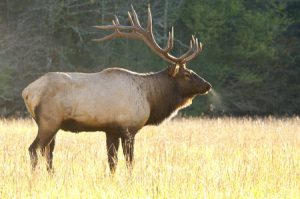 Many hunters say their first elk hunt is one of the most challenging yet most rewarding hunts. Elk are elusive. They roam long distances over wild and rugged terrain. Elk also respond to hunting pressure by moving deeper into vast, remote wilderness. The challenges of an elk hunt are technical, mental and physical, but you can minimize these challenges with adequate preparation.
Many hunters say their first elk hunt is one of the most challenging yet most rewarding hunts. Elk are elusive. They roam long distances over wild and rugged terrain. Elk also respond to hunting pressure by moving deeper into vast, remote wilderness. The challenges of an elk hunt are technical, mental and physical, but you can minimize these challenges with adequate preparation.
Elk hunting season may be over, but the off-season is where a great elk hunt begins. Get yourself elk hunt ready with these off-season tips.
Get in Elk Shape
Elk country is high country, and the thin air at elevation is just one of the challenges of stalking an elk. These animals walk miles each day through demanding terrain. They may ascend and descend through altitude several times during a hunt. Once you kill an elk, the real work starts. Every mile you stalk an elk is a mile you must carry the animal out. Remember, a mature bull weighs more than 700 lbs. Elk hunting is a physical endeavor that requires a high level of fitness. Prepare for your hunt by running and walking every day. Do it wearing your boots and carrying a loaded pack as often as possible, and supplement your cardio workouts with weight training.
Practice the Shot
As mentioned, elk are elusive. While it may be possible to get close enough to shoot an Elk at 30 yards out, keep in mind that they respond to hunting pressure. With this in mind, the only opportunity to take a shot may be as far as 350 yards away. You should be consistent at that distance and, because these are large, powerful animals, you should be capable of taking multiple shots quickly and accurately. The only way you gain those skills is through practice. Know your gun. Know how to shoot it consistently at long distances. Know how to take multiple shots.
Get the Right Rifle
Together with practicing your shot is having the right rifle for the job. A bull is large, and it takes a heavy caliber and heavyweight bullet to fell one. At Elk Ridge Outfitters, we typically recommend a .270 or larger rifle, but use the largest caliber rifle you can handle. Be familiar with the rifle, have it sighted for 200 yards and make sure you practice with the rifle you will use in the hunt.
Get the Right Gear
An elk hunt requires gear – boots, raingear, cold weather layers, backpacks, binoculars and more. Each of these things can be the difference between a successful, enjoyable hunt and miserable, painful one. Don’t skimp on gear.
These off-season preparations are just a few tips to help you prepare for your next elk hunt. Hunting season may be months away, but now is the right time to start preparing for an upcoming hunt.


Leave a Reply